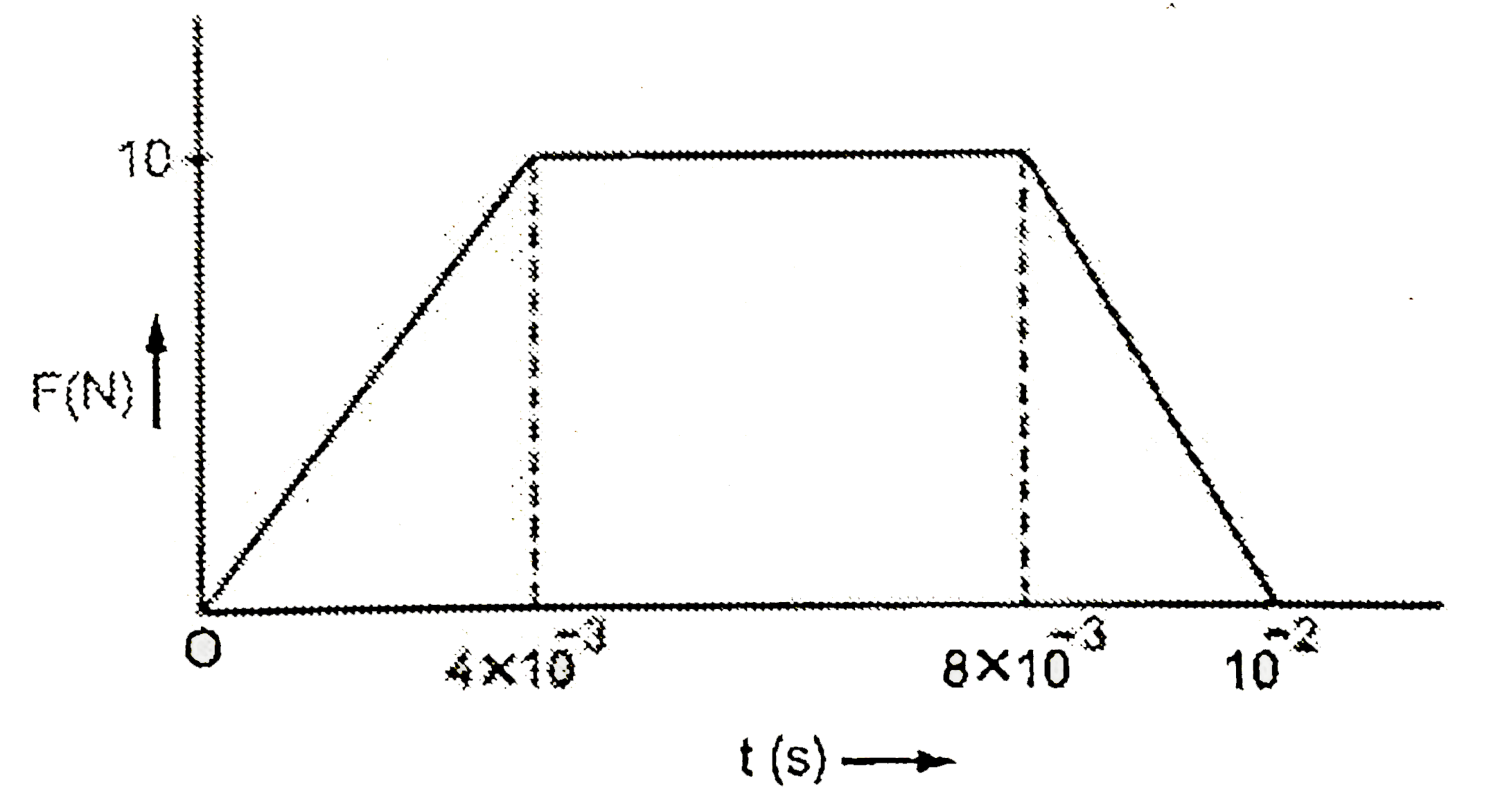A particle of mass m , initially at rest , is acted upon by a variable force F for a brief interval of time T. It begins to move with a velocity u after the forrce stops acting . F is shown in the graph as a function of time. The curve is a semicircle.

u=πF202m
u=πT28m
u=πF0T4m
F0T2m
The correct Answer is:C
Area of F−t graph =πF0T4
(Area of ellipse =πab)
Δp=πF0T4
m(u−0)=πF0T4⇒u=πF0T4m
Topper's Solved these Questions
Similar Questions
A particle of mass 2 kg is initially at rest. A force , acts on it whose magnitude changes with time. The force-time graph is of shown here.
The velocity of the particle after 10 s is

View SolutionA particle of mass m at rest is acted upon by a force P for a time t. Its kinetic energy after an interval t is
View Solution
Knowledge Check
A block of mass m at rest is acted upon by a force F for a time t. The kinetic energy of block after time t is
AF2t2mBF2t22mCF2t23mDFt2mA block of mass m at rest is acted upon by a force F for a time t. The kinetic energy of block after time t is
AF2t2mBF2t22mCF2t23mDFt2mA particle of mass m at rest is acted upon by a force P for a time t. Its kinetic energy after an interval t is
Ap2t2mBp2t22mCp2t23mDpt2m
A block of mass m at rest is acted upon by a force F for a time t. The kinetic energy of block after time t is
View SolutionA block of mass m at rest is acted upon by a force F for a time t. The kinetic energy of block after time t is
View SolutionA particle of mass 'm' and initially at rest is acted by a force F=a t. Newtons best representation of force-displacement graph is:
View SolutionA particle of mass m initially at rest is acted upon by a unidirectional force F=F∘cos(π2t). The distance travelled by the particle when it stops first in the subsequent motion is ,
View SolutionA particle of mas 70g, moving at 50cm/sis acted upon by a variable force opposite to its direction of motion. The force F is shown as a function of time t.

View Solution

